We are pleased to share our latest newsletter filled with information and updates from the scientific community around the Chesapeake Bay region. Now more than ever, we are challenged to stay informed, ensure that our results are shared and that our voices are heard.
Stay tuned for a "Special Edition" newsletter which will come out in the next few weeks to introduce everyone to our new website and the Chesapeake Bay Expertise Database - CBED (see article below), an interactive Bay region registry of scientific expertise.As promised, we will be sending out Starbucks gift cards to the 50 lucky registrants soon.
Registration in CBED is ongoing so please sign up and encourage your colleagues to do the same! One benefit of registering is that members will be able to request custom contact lists for efforts related to Chesapeake Bay science, research, and management. We encourage you to share our newsletter with colleagues who may have Bay-related interests. |
|
|
|
|
A short note on CRC web site and CBED:
 The CRC and Chesapeake Environmental Communications (CEC) are excitedly looking forward to the upcoming launch of our new CRC website by the end of May. Our new website will be even more user-friendly and information-rich than our current site, and it will feature the Chesapeake Bay Expertise Database (CBED). As I hope most of you already know, we have planned CBED as a better means of reaching out to the many (and diverse!) types of special-interest groups comprised within the Chesapeake Bay research and management community. Through experise database, the CRC will be better able to serve you by providing focused email serve lists for purposes of sharing information from funders and other partnership members, including organizers of proposals, workshops, and regional conferences relating to Bay science. CBED also will help its members continue to directly network – in particular, to help senior investigators to find and welcome “new blood” for their own networks and to help the “new blood” investigators identify new potential colleagues across disciplines, geography and age ranges. And so in this vein, I encourage you to explore the database and, if you have not already done so, register yourself. The CRC and Chesapeake Environmental Communications (CEC) are excitedly looking forward to the upcoming launch of our new CRC website by the end of May. Our new website will be even more user-friendly and information-rich than our current site, and it will feature the Chesapeake Bay Expertise Database (CBED). As I hope most of you already know, we have planned CBED as a better means of reaching out to the many (and diverse!) types of special-interest groups comprised within the Chesapeake Bay research and management community. Through experise database, the CRC will be better able to serve you by providing focused email serve lists for purposes of sharing information from funders and other partnership members, including organizers of proposals, workshops, and regional conferences relating to Bay science. CBED also will help its members continue to directly network – in particular, to help senior investigators to find and welcome “new blood” for their own networks and to help the “new blood” investigators identify new potential colleagues across disciplines, geography and age ranges. And so in this vein, I encourage you to explore the database and, if you have not already done so, register yourself.
A longer note on science, policy, and budgets:
By now we are all very well aware of federal budget proposals that, if enacted, could greatly diminish the collective ability of our community to continue our good work of developing sound scientific understanding, applying this understanding toward effective policy and management, and educating and training the nation’s workforce. And beyond such direct effects on our lives’ work, reductions of federal support for good science-management partnerships (such as the Chesapeake Bay Program) will yield commensurate negative impacts on the economy, through both estimable economic impact (see “Economic Evaluation of the Chesapeake Bay’s Natural Benefits”) and other even more difficult to quantify long-term losses that inevitably accrue from enacting policy without good understanding. As proclaimed on thousands of buttons, T-shirts, and placards on April 22: “There is no planet B.” And for those who have not yet seen it, a compelling recent essay on this topic (by Tom Horton and with quotes from others) can be found here.
Fortunately, regional understanding of these issues has long been high and remains so. This is evident from motivating language expressed in the early Chesapeake Bay Agreements and also in recent public responses to the proposed cuts in Chesapeake Bay Program funding – see the footnote at the bottom of this section for some relevant links.
But the real battle is happening NOW – Members of Congress very much need to hear the realities (facts) about the challenges of the science and policy complexities that our partnership helps us to meet, of the criticality of federal funding to coordinate and support this work, and the important consequences of failing at our mission. In this regard, it is also useful to note that the Chesapeake Bay partnership serves as a pathfinder and role model for similar efforts across the U.S. and, indeed, around the globe.
Many faculty and other staff and students at the CRC member institutions (including Board of Trustee Representatives and alternates) are writing letters, as respected scientists and leaders, to directly inform Members of Congress, and the CRC Board has been preparing jointly signed letters to Congressmen and Congresswomen.
I take this opportunity to urge you all to follow this lead and to make your own expert opinions known to those who can make a difference. PLEASE, if you have knowledge or expertise that can help inform a government leader, now is the time to share your information and ideas.
Respectfully yours,

William P. (Bill) Ball
Executive Director
Chesapeake Research Consortium
Footnote: The value of inter-institutional cooperation on Chesapeake Bay science and management has long been well understood in our region, as evident in founding documents for the Chesapeake Research Consortium (1972), Chesapeake Bay Commission (1980), and Chesapeake Bay Program (CBP) partnership (1983). The original Chesapeake Bay Agreement was signed in 1983, but public documentation of its motivations were not available until the preamble to the more detailed 1987 Chesapeake Bay Agreement and more recently in the 2014 Chesapeake Bay Watershed Agreement.
More recent evidence for local public appreciation of the Partnership can be seen in a wide variety of open letters, public statements, and news stories, only a small sample of which are linked in below:
February 2017 letter from 7 regional U.S. representatives to President Trump
March 2017 Joint Resolution of the Maryland Senate calling on Gov. Larry Hogan to publicly oppose the OMB budget proposal.
March 2017 issues statement from the Chesapeake Bay Foundation. This Chesapeake Bay advocacy group has been in existence for 50 years and reported engagement of over 230,000 members in 2016.
April 2017 letter from 9 regional U.S Senators to members of Senate appropriations committee.
April 2017 Virginia-Pilot article explaining that the Virginia Chamber of Commerce and the Virginia League of Conservation Voters both denounced Trump’s plan to cut CBP funding. The article also reports that Governor Terry McAuliffe called the proposed cut “one of the dumbest decisions [he’d] ever heard.”
|
|
Chesapeake Bay Expertise Database (CBED)
|
|
|
Now more than ever, we must work together to advance the development of good scientific understanding and promote its application toward Chesapeake Bay management. Toward this end, the CRC especially encourages all interested Chesapeake Regional scientists to REGISTER HERE with the new Chesapeake Bay Expertise Database (CBED) being developed by the CRC in collaboration with Chesapeake Environmental Communications.
The purpose of this database is to help connect faculty and staff scientists working on Chesapeake related issues with each other, with other scientists in the region, and with managers and other experts and research funders throughout the partnership. Also, and importantly, it will help the CRC to help you. Access to CBED will become publicly availablelater this month, at the same time that the CRC will be launching our updated website.
Registering should only take a few moments. (... more)
Being registered on CBED will:
- Allow regional colleagues inside or outside your discipline to find you for purposes of collaborative research.
- Allow scientists and managers at CRC member institutions, federal and state agencies, and non-governmental organizations (NGOs) and foundations to find you and connect with you and your Bay-related work, e.g., for purposes of workshop or research planning, or for sharing information about funding opportunities.
- Allow potential students and young scientists to find out about your expertise and Bay-related interests.
- Allow you to post a link to your own web site (or post a simple PDF of your CV or publication list) at a location where others can easily find it through indexed searching.
- Allow CRC to generate specially focused mailing lists for sharing funding opportunities and organizing workshops. Such lists will also be generated for vetted CBED members on request.
Experts covering a wide range of disciplines are needed, including the full spectrum of social, natural, and engineering science relevant to management of the 64,000-square-mile watershed. During registration, you will be asked for your discipline and expertise (in your own words) and you will be given opportunity to select among potential “management” applications, so we can better connect you in a targeted way with workshops, initiatives, and funding opportunities. These application areas align well with outcomes being sought by “Goal Implementation Teams (or GITs) within the Chesapeake Bay Program partnership. These include fostering stewardship; maintaining sustainable fisheries; protecting and restoring vital habitats; protecting and restoring water quality; maintaining healthy watersheds; and furthering effective partnership, leadership, and management.
|
|
|
CRC Welcomes Jennifer Doudney!
With the retirement of the CRC’s long-time Human Resources Administrator, Ms. Gay Haygood, on February 28th, we began the difficult task of looking for her replacement. We are happy to announce that we have hired Jennifer Doudney to take on many of Ms. Haygood’s previous responsibilities. Ms. Doudney has extensive experience in project management, accounting, and social media, along with a history of independent work with measurable goals, Ms. Doudney has made an excellent addition to the CRC!
|
|
|
Optimization Tool Development Project
As reported in the Winter 2017 edition of this Newsletter (Vol 2 No 1), the CRC is currently engaged in an Optimization Tool Development project through cooperative agreement with the US EPA, under Chesapeake Bay Program funding. The position derived from recommendations of a related STAC workshop held on February 17-18, 2016.
The original project work plan included the hiring of a post-doctoral level Research Scientist to work directly with the CBPO’s modeling team under advisement of an Advisory and Support Committee comprising six experts in optimization and environmental system analysis: Drs. Darrell Bosch (Va. Tech), Benjamin Hobbs (Johns Hopkins), Stuart Schwartz (UMBC), Hugh Ellis (Johns Hopkins), Art McGarrity (Swarthmore College), and George van Houtven (RTI).
There was considerable interest in the advertised position and several excellent candidates were identified and interviewed. Regrettably, however (and owing in large part to uncertainties associated with federal budget renegotiations), the position remains unfilled. At this stage, some members of the Advisory and Support Committee are working directly with the CRC, in close collaboration with the CBP modeling team to develop a revised work plan for the project.
|
|
|
Independent LSRRS Modeling Review
This project remains on-going, albeit with very few developments since our last newsletter. The effort involves the coordination of an external independent peer review of modeling activities being supported by Exelon Corporation toward better understanding the hydrodynamics and biogeochemistry of the Lower Susquehanna River Reservoir System (LSRRS), which includes Conowingo Pond. A website for the review has been established. The effort to date has helped to inform the Chesapeake Bay Program’s modeling effort (i.e., the Phase 6 Watershed Model) and also has implications for the CBP’s Water Quality and Sediment Transport Model (WQSTM) for the Chesapeake Bay itself. As described elsewhere in this newsletter, the CBP’s most recent LSRRS-related modeling activities are still being prepared for upcoming review by CBP’s Scientific and Technical Advisory Committee (STAC).
|
|
Opportunities for Future Collaborations
|
|
|
Periodically, we will use this newsletter to alert subscribers to selected opportunities for collaborative involvement in Bay research that are of sufficient breadth to be of broad interest and with timelines (deadlines) appropriate for the constraints of a quarterly newsletter. We aim to highlight initiatives that might not otherwise be on your radar, and focus on opportunities where cross-institutional involvement is likely to enhance success. As elsewhere, we welcome contributions from members and partners for publication in future issues.
CRC Note: The CRC stands ready to support any Principal Investigator in a member institution or partnering organization who is interested in pursuing collaboration. Please contact us if you have an idea you would like to pursue.
|
|
Opportunities for Young Scientists: Training, Education, and Research
|
|
|
 Research Experience for Undergraduates (REU) Opportunity: An Interdisciplinary Program for Climate Change Science in Metropolitan Coastal Communities at Old Dominion University. Research Experience for Undergraduates (REU) Opportunity: An Interdisciplinary Program for Climate Change Science in Metropolitan Coastal Communities at Old Dominion University.
This NSF-funded award will support up to 10 undergraduate scholars on campus over the next three summers matched to faculty mentors for individual research projects as well as group activities linked to ODU’s sea level rise activities. Student arrive at the end of May for 10 weeks, and the program for this summer is about to be finalized. Professor Rodger Harvey is the official program director, and Shannon Cofield will be the program coordinator this summer. More information on this program available on their website.
|
|
Atkins Minority STEM Scholarship Program
|
|
|
 Atkins is a design, engineering, and project management consulting firm with locations all over the world. They have a tradition of assisting minority students in completing their higher education programs through the Atkins Minority STEM Scholarship Program. The program is available to female students or students of African American, Asian, Pacific Island, Native American, Native Alaskan or Hispanic descent. In addition, applicants must meet other eligibility requirements listed on their website. Atkins is a design, engineering, and project management consulting firm with locations all over the world. They have a tradition of assisting minority students in completing their higher education programs through the Atkins Minority STEM Scholarship Program. The program is available to female students or students of African American, Asian, Pacific Island, Native American, Native Alaskan or Hispanic descent. In addition, applicants must meet other eligibility requirements listed on their website.
Scholarships of $2,000 are awarded for the fall and spring semesters to qualified students. Upon meeting the program criteria, scholarship recipients are selected through a competitive process. A local selection committee composed of Atkins technical Leaders will choose the recipient.
All scholarship funds are paid directly toward the student's tuition. If you have any questions or comments about the Atkins Foundation Women and Minorities STEM Scholarship, are interested in learning more about recipients for internships or the graduate development program, or to find out how you can play a part in the continued success of this program, please contact them at (305) 514-326, by email at MinorityScholarship@atkinsglobal.com or visit their website.
|
|
Alfred P. Sloan Foundation
|
|
|
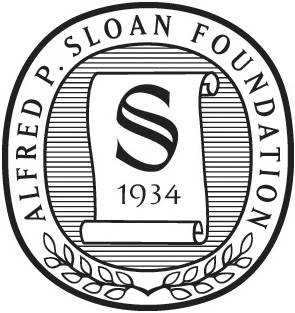 The Alfred P. Sloan Foundation makes grants primarily to support original research and education related to science, technology, engineering, mathematics, and economics. The Foundation believes that these fields—and the scholars and practitioners who work in them—are chief drivers of the nation's health and prosperity. The following program areas are currently open: Data & Computational Research, Energy & Environment, and Scholarly Communication. The Alfred P. Sloan Foundation makes grants primarily to support original research and education related to science, technology, engineering, mathematics, and economics. The Foundation believes that these fields—and the scholars and practitioners who work in them—are chief drivers of the nation's health and prosperity. The following program areas are currently open: Data & Computational Research, Energy & Environment, and Scholarly Communication.
Scientists and students involved in Chesapeake Bay research may be particularly interested in the Energy & Environment page, and interested applicants can send a letter of inquiry of no more than two pages to program director Evan S. Michelson (michelson@sloan.org). The Foundation’s website provides information on the suite of other funding opportunities they offer.
|
|
Women & Minorities in Science, Tech, Engineering, and Math Fields Program (WAMS)
|
|
|
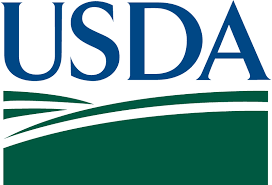 If you are an educator working to increase the number of underrepresented minority students in a STEM field, you can apply for up to $100,000 for your next project. If you are an educator working to increase the number of underrepresented minority students in a STEM field, you can apply for up to $100,000 for your next project.
The Women and Minorities in Science, Technology, Engineering, and Mathematics Fields Program supports research and extension activities that will increase the number of women and underrepresented minorities from rural areas who will pursue and complete a postsecondary degree in science, technology, engineering, or mathematics (STEM) disciplines. The program is currently accepting applications.The deadline for submission is Thursday, June 8 at 5 p.m., EDT. Visit the WAMS funding opportunity page to access application instructions and abstracts of previously funding grants.
|
|
CRaB: Collaborative Research around the Bay
|
|
|
CRC members are an active bunch, addressing some of the most critical issues in Chesapeake Bay. In this section, we highlight collaborative projects involving investigators from two or more CRC member institutions, whether recently completed, on-going, or newly initiated. If you have a project you would like us to feature in future articles, please let us know.
|
|
|
Much of the conversation around climate change focuses on expected future changes. A robust partnership between federal and state agencies, academia, and the private sector seeks to change that, while also developing a new model for research projects that includes a communication effort at its core. The project, Changing Chesapeake, focuses on understanding how climate change has already impacted the Chesapeake Bay.
In 2014, National Oceanic and Atmospheric Administration’s (NOAA) funded the University of Maryland’s Center for Environmental Science (UMCES) to partner with the Chesapeake Bay National Estuarine Research Reserve System (CB NERRS) in Maryland and Virginia, and Chesapeake Environmental Communications (CEC) to analyze long-term regional climate data. Each partner has brought meaningful expertise to the project. UMCES researchers have conducted in-depth statistical analysis and correlations on the 114 year dataset. CEC has developed storylines, key messages, and several products to communicate the findings. CB NERRS staff have provided additional data, keen insight on observed system responses, and guidance on the types of products they need to support their outreach and education efforts. (... more)
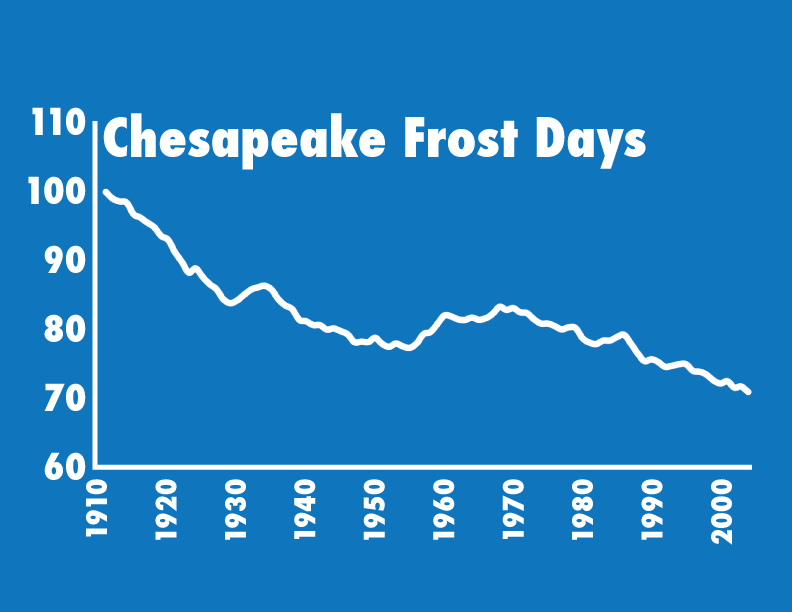 Project accomplishments were recently featured in a Baltimore Sun article, which highlighted many of the tangible products becoming available. First, the Changing Chesapeake website is now live. The site features graphs, written explanations, and a gallery of interactive images that allow viewers to scroll through different figures. Four key messages drive home how climate change has already affected the Chesapeake Bay. Second, a fifth chapter of the Chesapeake Bay Ecosystem Atlas will become available this summer. The interactive online textbook, geared for middle and high school students, outlines the history and ecology of the bay. Third, a team of contributors has been regularly publishing posts on the Science Pensieve Blog, a site dedicated to making climate change science more transparent. The contributors published weekly posts to facilitate communication between project partners and show the scientific process to teachers and students. Finally, two scientific articles are under review about the effects of climate change on the Chesapeake Bay. The first utilizes modeling tools to use past climate data to project change under two different emissions scenarios. The second looks at how changes in climate affect shallow water ecosystems. The data from these projects was used to create the information on the Changing Chesapeake website and the Science Pensieve Blog. One author of the papers, Dr. Victoria Coles of the University of Maryland Center for Environmental Science (UMCES) Horn Point Lab, explained that the blog posts about their research “gave our partners a window into our scientific process and helped...them arrive at an understanding on what they would like to see.” All of these products together will inform students, government officials, and citizens about the risks that climate change poses to the Chesapeake Bay. Project accomplishments were recently featured in a Baltimore Sun article, which highlighted many of the tangible products becoming available. First, the Changing Chesapeake website is now live. The site features graphs, written explanations, and a gallery of interactive images that allow viewers to scroll through different figures. Four key messages drive home how climate change has already affected the Chesapeake Bay. Second, a fifth chapter of the Chesapeake Bay Ecosystem Atlas will become available this summer. The interactive online textbook, geared for middle and high school students, outlines the history and ecology of the bay. Third, a team of contributors has been regularly publishing posts on the Science Pensieve Blog, a site dedicated to making climate change science more transparent. The contributors published weekly posts to facilitate communication between project partners and show the scientific process to teachers and students. Finally, two scientific articles are under review about the effects of climate change on the Chesapeake Bay. The first utilizes modeling tools to use past climate data to project change under two different emissions scenarios. The second looks at how changes in climate affect shallow water ecosystems. The data from these projects was used to create the information on the Changing Chesapeake website and the Science Pensieve Blog. One author of the papers, Dr. Victoria Coles of the University of Maryland Center for Environmental Science (UMCES) Horn Point Lab, explained that the blog posts about their research “gave our partners a window into our scientific process and helped...them arrive at an understanding on what they would like to see.” All of these products together will inform students, government officials, and citizens about the risks that climate change poses to the Chesapeake Bay.
This project is the culmination of a non-traditional partnership between academic, private, and government institutions. Dr. Coles explained that the collaborative nature of the project “...was unusual in that we started engaging our partners from the get-go in talking about what kinds of research outcomes they wanted to see happen. We didn’t go in with a predefined research plan...it was an iterative process that we reached with many of our partners.” The products of this project are extremely collaborative and provide tools to government officials and teachers to help better educate those living on the bay about their natural resources and how those might shift in a changing climate.
|
|
Book Chapter Written by Bay Scientists
|
|
|
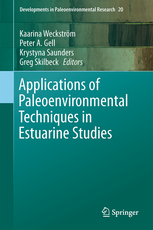 Several scientists from the Chesapeake Bay region have come together to write "Paleoecology Studies in Chesapeake Bay: A Model System for Understanding Interactions Between Climate, Anthropogenic Activities and the Environment.” This work is published as a chapter in “Applications of Paleoenvironmental Techniques in Estuarine Studies,” a first edition text book published by Springer this year. The book discusses how paleoecological studies can inform coastal management. It is geared towards estuarine scientists and managers who want to include more paleoenvironmental research in their programs. The Chesapeake chapter was authored by Elizabeth Canuel (VIMS), Grace Brush (Johns Hopkins), Thomas Cronin (USGS), Rowan Lockwood (The College of William and Mary), and Andrew Zimmerman (University of Florida), who are all PI’s in the Chesapeake Bay area. Several scientists from the Chesapeake Bay region have come together to write "Paleoecology Studies in Chesapeake Bay: A Model System for Understanding Interactions Between Climate, Anthropogenic Activities and the Environment.” This work is published as a chapter in “Applications of Paleoenvironmental Techniques in Estuarine Studies,” a first edition text book published by Springer this year. The book discusses how paleoecological studies can inform coastal management. It is geared towards estuarine scientists and managers who want to include more paleoenvironmental research in their programs. The Chesapeake chapter was authored by Elizabeth Canuel (VIMS), Grace Brush (Johns Hopkins), Thomas Cronin (USGS), Rowan Lockwood (The College of William and Mary), and Andrew Zimmerman (University of Florida), who are all PI’s in the Chesapeake Bay area.
|
|
Mid-Atlantic regional Impacts and Assessment Program Update
Decision-screening for Key Issues in the Chesapeake Bay Watershed
|
|
|
As part of its Year 1 activities, the Mid-Atlantic RISA (MARISA) is performing a decision-screening process to help establish MARISA’s analytical priorities on key decisions and issues in the region affected by a changing climate; and over time, develop collaborative, stakeholder-informed robust adaptation strategies to benefit the region.
Over 20 interviews with federal, state, and local government officials; coastal and environmental managers; transportation planners; water and electric utility officials; land conservationists; hydrologists; atmospheric scientists; and other local stakeholders have been completed.
Responses shed light on questions pertaining to decisions and investments in consideration today that would most benefit from the inclusion of climate information, adaptation initiatives have been accomplished and proposed future adaptation options, key knowledge and data gaps in climate resilience and adaptation initiatives, opportunities to advance climate resilience efforts, and finally, challenges or threats to advancing those efforts.
A synthesis of their findings, led by Prof. Ben Hobbs at Johns Hopkins University, is expected to be released in late spring 2017.
Closing Data and Information Gaps
Rob Nicholas, a MARISA researcher at Penn State, is leading the development of a 1948-2015 daily precipitation and minimum/maximum temperature product that spans the entire Mid-Atlantic region. The data set is undergoing quality assurance and validation checks now and will be released in summer 2017 with an accompanying journal article.
About MARISA
The Mid-Atlantic Regional Integrated Sciences and Assessments (MARISA) program was established in September 2016 through a five-year grant from the National Oceanic and Atmospheric Administration (NOAA). MARISA supports integrated, flexible processes for building adaptive capacity to climate variability and change in diverse settings in the Mid- Atlantic region, with an initial focus on the Chesapeake Bay Watershed. MARISA is led by the nonprofit RAND Corporation, in partnership with researchers in Penn State University’s Earth and Environmental Systems Institute, and the Environment, Energy, Sustainability and Health Institute at Johns Hopkins University, along with support from researchers in the Department of Earth and Atmospheric Sciences at Cornell University.
Find out more at www.MidAtlanticRISA.org and www.marisa.psu.edu and follow them on Twitter @MidAtlanticRI
|
|
Submerged Aquatic Vegetation Research & Collaboration
|
|
|
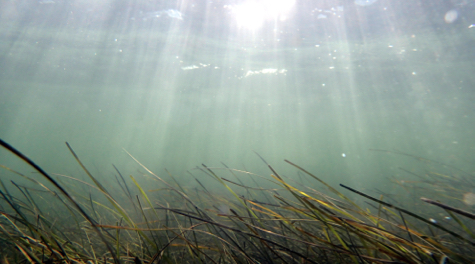 Scientists from VIMS and UMCES have collaborated to publish a paper on how eelgrass in the Chesapeake Bay is being negatively affected by turbid water. These scientists came together to form an effort called the Submerged Aquatic Vegetation synthesis (SAV SYN). The paper resulting from this effort is entitled “Multiple stressors threaten the imperiled coastal foundation species eelgrass (Zostera marina) in Chesapeake Bay, USA” and was published in Global Change Biology. Their study shows that eelgrass populations have declined at staggering rates, causing huge ecological and economic costs. The authors, Robert Orth, David Wilcox, Rebecca Murphy, and Scott Marion reported that their study confirmed that declines in eelgrass cause decreases in water quality, and affect blue crab populations that rely on eelgrass as important habitat. Although eelgrass populations are particularly good at recovering from warming events, the scientists stressed that recovery will become harder and harder in murkier, warmer water. Scientists from VIMS and UMCES have collaborated to publish a paper on how eelgrass in the Chesapeake Bay is being negatively affected by turbid water. These scientists came together to form an effort called the Submerged Aquatic Vegetation synthesis (SAV SYN). The paper resulting from this effort is entitled “Multiple stressors threaten the imperiled coastal foundation species eelgrass (Zostera marina) in Chesapeake Bay, USA” and was published in Global Change Biology. Their study shows that eelgrass populations have declined at staggering rates, causing huge ecological and economic costs. The authors, Robert Orth, David Wilcox, Rebecca Murphy, and Scott Marion reported that their study confirmed that declines in eelgrass cause decreases in water quality, and affect blue crab populations that rely on eelgrass as important habitat. Although eelgrass populations are particularly good at recovering from warming events, the scientists stressed that recovery will become harder and harder in murkier, warmer water.
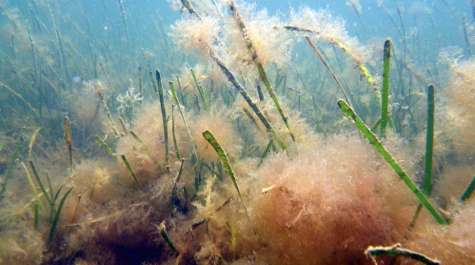 The scientists formed SAV SYN in order to show how aquatic grasses act as defenders and indicators of Chesapeake Bay health. SAV SYN has put on a series of small, immersive workshops of 15 scientists from 5 different institutions. They have published the goals of these workshops online, and they will be updating the blog regularly with their progress. They hope that the combination of scientific developments and targeted outreach efforts will help policymakers and resource managers incorporate water clarity and warming into their management strategies.
(Images courtesy of J. Lefcheck for VIMS) The scientists formed SAV SYN in order to show how aquatic grasses act as defenders and indicators of Chesapeake Bay health. SAV SYN has put on a series of small, immersive workshops of 15 scientists from 5 different institutions. They have published the goals of these workshops online, and they will be updating the blog regularly with their progress. They hope that the combination of scientific developments and targeted outreach efforts will help policymakers and resource managers incorporate water clarity and warming into their management strategies.
(Images courtesy of J. Lefcheck for VIMS)
|
|
Dynamics of biogeochemical processes in the Chesapeake Bay
|
|
|
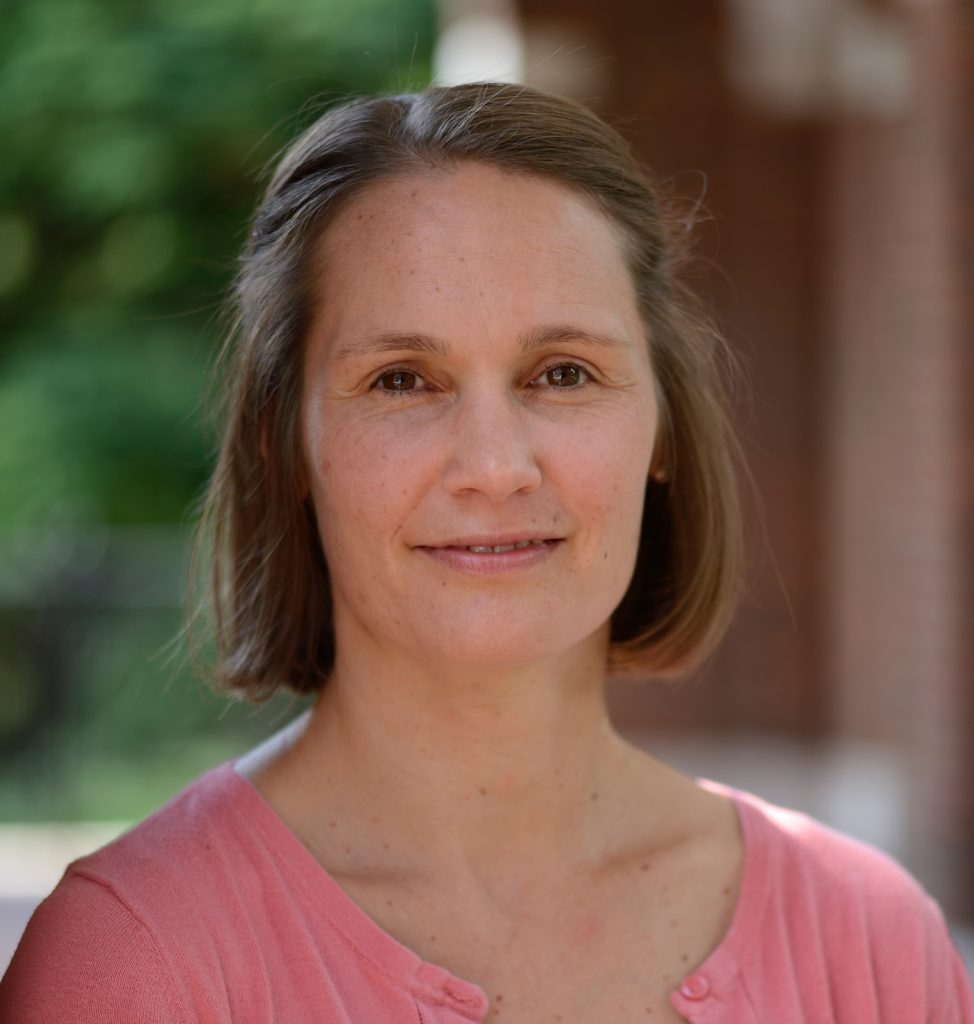 A major focus of research Prof. Sarah Preheim's lab involves investigating the best way to integrate metagenomic (the direct genetic analysis of genomes contained in an environmental sample) data into biogeochemical models. The success of a model in predicting microbial population distribution in a water body is likely due to hydrologic conditions during stratification, allowing bacterial cells to remain where they have energy for growth. However, in ocean and estuarine ecosystems, mixing will likely complicate the relationship between favorable conditions for microbial metabolism and conditions that favor cell distribution, moving cells away from their preferred habitat. Preheim’s lab is modeling the microbial processes occurring in the Chesapeake Bay dead-zone under different mixing regimes. They will evaluate how metagenomic datasets from DNA, RNA or protein, representing different metabolic states, compare to model predictions. Models guided by metagenomics will provide better insight into dead-zone biogeochemistry and improve the predictive power for management and remediation. A major focus of research Prof. Sarah Preheim's lab involves investigating the best way to integrate metagenomic (the direct genetic analysis of genomes contained in an environmental sample) data into biogeochemical models. The success of a model in predicting microbial population distribution in a water body is likely due to hydrologic conditions during stratification, allowing bacterial cells to remain where they have energy for growth. However, in ocean and estuarine ecosystems, mixing will likely complicate the relationship between favorable conditions for microbial metabolism and conditions that favor cell distribution, moving cells away from their preferred habitat. Preheim’s lab is modeling the microbial processes occurring in the Chesapeake Bay dead-zone under different mixing regimes. They will evaluate how metagenomic datasets from DNA, RNA or protein, representing different metabolic states, compare to model predictions. Models guided by metagenomics will provide better insight into dead-zone biogeochemistry and improve the predictive power for management and remediation.
Professor Preheim received her Ph.D. in Biological Oceanography in 2010 from Massachusetts Institute of Technology/Woods Hole Oceanographic Institution Joint Program and worked as a postdoctoral associate in the Biological Engineering Department at MIT before joining the Department of Environmental Health and Engineering at Johns Hopkins University in 2014.
|
|
Solute transport modeling and dynamics at landscape scales
|
|
|
 An ongoing research project in Prof. Harman’s laboratory is concerned with understanding the dynamics of solutes in the landscape, and the controls of climate and landscape properties on their fate and transport. They have developed the concept of a rank StorAge Selection (rSAS) function as a tool for characterizing and modeling emergent transport dynamics, and applied it in several field sites and experimental systems. The results are helping to clarify the way climate variability affects flow pathways through the landscape, and have led to the development of new tools for modeling the effects at the watershed scale of the Chesapeake Bay. An ongoing research project in Prof. Harman’s laboratory is concerned with understanding the dynamics of solutes in the landscape, and the controls of climate and landscape properties on their fate and transport. They have developed the concept of a rank StorAge Selection (rSAS) function as a tool for characterizing and modeling emergent transport dynamics, and applied it in several field sites and experimental systems. The results are helping to clarify the way climate variability affects flow pathways through the landscape, and have led to the development of new tools for modeling the effects at the watershed scale of the Chesapeake Bay.
Professor Harman has been at JHU since 2012. He received the American Geophysical Union Hydrology Section Early Career Award in 2016 and in 2017 was selected to receive a National Science Foundation CAREER Award. In March of 2017, he was installed by the JHU Whiting School of Engineering as the Russell Croft Faculty Scholar.
|
|
Penn State Collaborative Project with Spain Helps Reveal How Cover Crops May Be Used toward Climate Change Mitigation and Adaptation
|
|
|
Jason Kaye, a professor of soil biogeochemistry in Penn State's College of Agricultural Sciences, in collaboration with a colleague at the Technical University of Madrid , has published a review of studies in central Spain and Pennsylvania to suggest that in addition to their more commonly touted environmental benefits, cover crops may also mitigate carbon emissions and help farmers deal with droughts and extreme rainfall events. In work published in a recent issue of Agronomy for Sustainable Development, the researchers conclude that cover-crops can typically reduce a field's carbon footprint by approximately 100-150 grams of carbon per square meter per year, which is comparable to, and perhaps higher than, mitigation from transitioning to no-till. The key mechanisms were reported to be increased soil carbon sequestration and reduced fertilizer use after legume cover crops. For further information, a PSU news story can be found here.
|
|
Ships struggle to battle invasive species as global trade surges
|
|
|
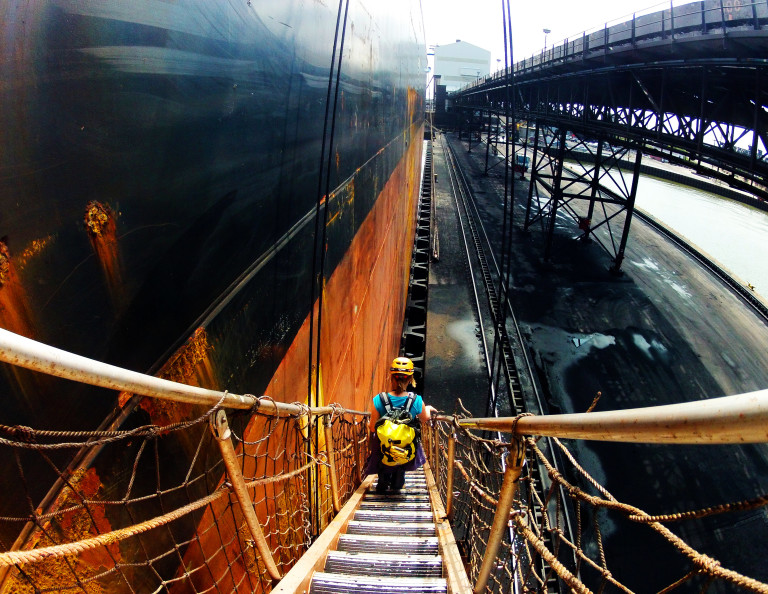 In the battle against invasive species, bulk carrier ships or “bulkers” and other large commercial ships are fighting on the front lines. But even when they follow the rules, one of their best weapons is coming up short, as reported by Greg Ruiz and a team of Smithsonian Environmental Research Center (SERC) marine biologists led by Jenny Carney in a new study published in PLOS ONE. Despite widespread use of open-ocean exchange to treat ballast water since 2004, the concentrations of potential invaders is still rising in ships entering the Chesapeake. Scientists suspect the surge in global trade is counteracting the benefits of exchanging ballast water in the open ocean, making the search for onboard treatment options even more critical. You can read more about this story in the SERC Shorelines blog. (Picture courtesy Kim Holzer for SERC) In the battle against invasive species, bulk carrier ships or “bulkers” and other large commercial ships are fighting on the front lines. But even when they follow the rules, one of their best weapons is coming up short, as reported by Greg Ruiz and a team of Smithsonian Environmental Research Center (SERC) marine biologists led by Jenny Carney in a new study published in PLOS ONE. Despite widespread use of open-ocean exchange to treat ballast water since 2004, the concentrations of potential invaders is still rising in ships entering the Chesapeake. Scientists suspect the surge in global trade is counteracting the benefits of exchanging ballast water in the open ocean, making the search for onboard treatment options even more critical. You can read more about this story in the SERC Shorelines blog. (Picture courtesy Kim Holzer for SERC)
|
|
Sonar revealing more river herring in Choptank than expected
|
|
|
Scientists have a powerful new tool to help them “see” fish in the Chesapeake Bay’s murky tributaries, and it’s yielding some surprisingly good news about two of the estuary’s most troubled species: alewife and blueback herring, collectively known as river herring.
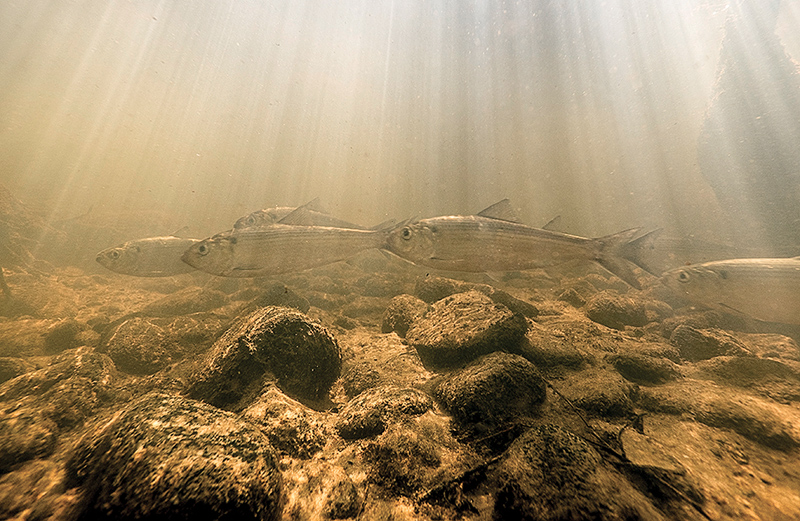 One of the top catches in the Chesapeake Bay in the 1930s, river herring spawning runs have dwindled in most places, prompting serious concern that they may be disappearing across much of their range, which covers virtually the entire Atlantic Coast. Though their commercial importance has faded, alewives and blueback herring are still considered important forage for larger fish, including striped bass and bluefish. So, their demise could have a ripple effect on other species. One of the top catches in the Chesapeake Bay in the 1930s, river herring spawning runs have dwindled in most places, prompting serious concern that they may be disappearing across much of their range, which covers virtually the entire Atlantic Coast. Though their commercial importance has faded, alewives and blueback herring are still considered important forage for larger fish, including striped bass and bluefish. So, their demise could have a ripple effect on other species.
No one knows for sure how many river herring are in the Bay, as fisheries managers lack the staff and resources to do a comprehensive assessment. But a SERC-led team of scientists deployed an imaging sonar device in the Choptank River in 2014 that captured images of the fish as they swam by. Based on the rate at which scientists saw the shadowy blips cross their computer screens, they estimated that as many as 1.3 million river herring swam upriver that spring to spawn. The Bay Journal reported that these efforts will help give scientists a better idea of how conservation efforts are helping herring populations.(Photo Credit: Dave Harp, Bay Journal)
|
|
Generating solar power at Horn Point
|
|
|
Solar renewable energy will soon be generated in Cambridge, Maryland, on the grounds of the University of Maryland Center for Environmental Science (UMCES). UMCES has signed an agreement with Standard Solar, Inc. to install a solar field on approximately 10 acres of its Horn Point Laboratory (HPL) campus. The solar field will be a 2 MW system with expected approximate annual generation of 3.5 MWh of solar renewable energy.
 “While the work we do here helps others live more sustainably, it’s essential that we lead by example,” said UMCES president Don Boesch, who has led the University System of Maryland’s Environmental Sustainability and Climate Change Initiative since 2008. “Higher education has a key role in shaping a sustainable society.” “While the work we do here helps others live more sustainably, it’s essential that we lead by example,” said UMCES president Don Boesch, who has led the University System of Maryland’s Environmental Sustainability and Climate Change Initiative since 2008. “Higher education has a key role in shaping a sustainable society.”
The project is a Power Purchase Agreement (PPA) in which the entity, Standard Solar, installs and operates the solar panels in exchange for the use of land, and UMCES agrees to purchase the equivalent energy being generated over the next 20 years from Standard Solar. It is expected that the solar field will generate approximately 50% of the Horn Point Laboratory’s annual energy consumption with anticipated cost savings over the duration of the agreement.(... more)
The University of Maryland Center for Environmental Science is a signatory to the American College & University Presidents’ Climate Commitment and has launched several programs aimed at reducing our environmental footprint, including setting goals for reducing greenhouse gas (GHG) emissions at each of their laboratories, upgrading aging infrastructure to newer, more energy-efficient alternatives, and building all new campus buildings to at least the U.S. Green Building Council's LEED Silver standard or equivalent.
Design of the system has already begun on the solar project at the Horn Point Laboratory and construction is expected to begin this summer and be in service by the spring of 2018.
“The solar field is another example of how we are using innovative ways to manage Horn Point Laboratory in a way that reduces our environmental footprint and engages with the community, ”said Mike Roman, director of the Horn Point Laboratory. This project also contributes to increasing Maryland’s in-state distributed electricity generation capacity and reducing the dependency on electricity imported from other states.”
UMCES has also been selected to receive a grant from the Maryland Energy Administration’s Solar PV Canopy with EV Charger Grant Program to offset the cost of four level-II electrical vehicle-charging stations on campus.
|
|
New Book Offers Guidance and Case Studies for the Use of Living Shorelines
|
|
|
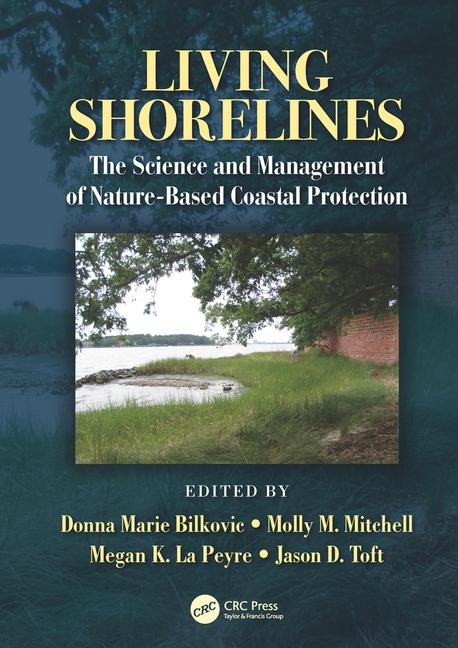 Donna Marie Bilcovic and Molly Mitchell, researchers with the Virginia Institute of Marine Science’s Center for Coastal Resources Management are two of the four co-authors of a recently published book, Living Shorelines: The Science and Management of Nature-Based Coastal Protection. The book provides recommendations on the correct usage of the term “living shorelines”, guidance on shoreline management in the future, lessons learned from the practice of shoreline restoration and conservation, and synthesizes regional perspectives to identify strategies for the successful design and implementation of living shorelines.
This publication will serve as a valuable reference to guide scientists, students, managers, planners, regulators, environmental and engineering consultants, and others engaged in the design and implementation of living shorelines. Donna Marie Bilcovic and Molly Mitchell, researchers with the Virginia Institute of Marine Science’s Center for Coastal Resources Management are two of the four co-authors of a recently published book, Living Shorelines: The Science and Management of Nature-Based Coastal Protection. The book provides recommendations on the correct usage of the term “living shorelines”, guidance on shoreline management in the future, lessons learned from the practice of shoreline restoration and conservation, and synthesizes regional perspectives to identify strategies for the successful design and implementation of living shorelines.
This publication will serve as a valuable reference to guide scientists, students, managers, planners, regulators, environmental and engineering consultants, and others engaged in the design and implementation of living shorelines.
|
|
|
A research group studying urban stormwater management headed by Dr. David Sample at Virginia Tech has recently authored the following article: Johnson, R. D. and D. J. Sample (2017). "A semi-distributed model for locating stormwater best management practices in coastal environments." Environmental Modelling & Software 91: 70-86.
 This paper is about a python-based model that uses commonly available geographic information system (GIS) data, a groundwater elevation map of the study area, and a set of constraints established by state guidelines for each best management practice (BMP) to assess feasible locations for urban BMPs, which can then be easily mapped. The model also calculates nitrogen and phosphorus loads and preliminary cost information. The best use of the model is for preliminary planning, i.e., locating urban BMPs where they are the most feasible and can deliver the most load reduction. The City of Virginia Beach funded this effort. This paper is about a python-based model that uses commonly available geographic information system (GIS) data, a groundwater elevation map of the study area, and a set of constraints established by state guidelines for each best management practice (BMP) to assess feasible locations for urban BMPs, which can then be easily mapped. The model also calculates nitrogen and phosphorus loads and preliminary cost information. The best use of the model is for preliminary planning, i.e., locating urban BMPs where they are the most feasible and can deliver the most load reduction. The City of Virginia Beach funded this effort.
Sample’s research group has also recently completed work on a 2-year field experiment in partnership with Clemson University investigating floating treatment wetlands (FTWs). This is part of the Clean WateR3 - Reduce, Remediate and Recycle' Specialty Crop Research Initiative (SCRI) grant funded by the U.S. Dept. of Agriculture National Institute for Food and Agriculture (USDA/NIFA). The purpose of their experiments in Virginia Beach were to assess the effectiveness of FTWs for: 1) providing effective treatment of nutrient enriched irrigation runoff from container crops (nurseries), and 2) assess the potential for use of the plant stock as a viable nursery product. Preliminary results indicate that significant reductions of nitrogen and/or phosphorus were observed in mesocosms containing Pontederia cordata (Pickerelweed) and Panicum virgatum (Switchgrass). In terms of viability, results were mixed; those plants that were the stronger performers at nutrient reduction did not tend to fare well after transplanting. Other plant species were also effective, but results were mixed. A similar trial was also simultaneously conducted at Clemson, SC; results from that work are still pending analysis.
|
|
|
 Dr. Qian Zhang, currently an employee of UMCES at the USEPA Chesapeake Bay Program Office and a recent PhD graduate of Johns Hopkins University, received the Innovyze Excellence in Computational Hydraulics/Hydrology Award for 2017 in honor of his doctoral dissertation work. Dr. Zhang and his doctoral advisor (William Ball) were honored at a ceremony held at the National Press Club on April 13th. This national award is given annually by the American Academy of Environmental Engineers (AAEE) and the Association of Environmental Engineering and Science Professors (AEESP) to recognize a student whose research contributes substantially to the knowledge pool in the area of Computational Hydraulics & Hydrology. Criteria for selection include research accomplishments (including original, innovative research of publishable quality), academic program performance, professional and community service, and a candidate’s purpose and goals. Dr. Zhang completed his PhD at JHU in the former Department of Geography and Environmental Engineering (now re-organized as part of the new Department of Environmental Health and Engineering). Also serving on Dr. Zhang’s dissertation committee were Drs. Ciaran Harman (JHU), Peter Wilcock (Utah State University, formerly at JHU), and Robert Hirsch (USGS). The title of Dr. Zhang's dissertation was "Quantifying Nutrient and Sediment Export from the Chesapeake Bay Watershed: Retrospective Analyses and Method Improvements.” He is currently employed by UMCES as a Research Assistant Scientist and works as the Watershed Effectiveness Data Analyst at the U.S. EPA Chesapeake Bay Program Office. Dr. Qian Zhang, currently an employee of UMCES at the USEPA Chesapeake Bay Program Office and a recent PhD graduate of Johns Hopkins University, received the Innovyze Excellence in Computational Hydraulics/Hydrology Award for 2017 in honor of his doctoral dissertation work. Dr. Zhang and his doctoral advisor (William Ball) were honored at a ceremony held at the National Press Club on April 13th. This national award is given annually by the American Academy of Environmental Engineers (AAEE) and the Association of Environmental Engineering and Science Professors (AEESP) to recognize a student whose research contributes substantially to the knowledge pool in the area of Computational Hydraulics & Hydrology. Criteria for selection include research accomplishments (including original, innovative research of publishable quality), academic program performance, professional and community service, and a candidate’s purpose and goals. Dr. Zhang completed his PhD at JHU in the former Department of Geography and Environmental Engineering (now re-organized as part of the new Department of Environmental Health and Engineering). Also serving on Dr. Zhang’s dissertation committee were Drs. Ciaran Harman (JHU), Peter Wilcock (Utah State University, formerly at JHU), and Robert Hirsch (USGS). The title of Dr. Zhang's dissertation was "Quantifying Nutrient and Sediment Export from the Chesapeake Bay Watershed: Retrospective Analyses and Method Improvements.” He is currently employed by UMCES as a Research Assistant Scientist and works as the Watershed Effectiveness Data Analyst at the U.S. EPA Chesapeake Bay Program Office.
|
|
NOAA Chesapeake Bay Office News
|
|
NCBO and CRC Hire Summer Interns
|
|
|

The NOAA Chesapeake Bay Office and Chesapeake Research Consortium are again providing college students 12-week internship opportunities to explore career paths and gain experience in Chesapeake Bay-related sciences through summer internships in 2017.
Response to the three available positions was amazing, with 374 applications for the openings. After a lengthy review and interview process, NCBO and CRC selected the following candidates:
Hydrodynamic and hydrologic modeling intern: Breck Sullivan, a graduate student at State University of New York College of Environmental Science and Forestry majoring in Environmental Monitoring and Modeling. She will be working with scientists from multiple NOAA offices to evaluate the impacts of improved freshwater inflow modeling on salinity simulations from the Chesapeake Bay Operational Forecast System (CBOFS). Improving CBOFS predictions which drive ecological models is critical for supporting ecosystem management decisions
Field technician intern: Jessica Murray, a rising senior at Juniata College in Pennsylvania majoring in Environmental Science. She will play a major role in supporting the NCBO’s habitat assessment and fisheries work, which for the summer of 2017 largely entails preparing for and assisting with a project sampling fish utilization of oyster reefs.
Spatial ecology technician intern: Joseph Allman, a rising senior at University of Maryland, Baltimore County majoring in Environmental Science. In this position, Joseph will be using basic GIS tools to assess habitat at fish sampling sites related to oyster reefs. He will also assist with some field work, including the previously mentioned fish utilization project.
|
|
NCBO Co-Hosts Animal Telemetry Workshop
|
|
|
NCBO partnered with the Mid Atlantic Regional Association Coastal Ocean Observing System (MARACOOS) and NOAA’s Integrated Ocean Observing System (IOOS) to host a telemetry workshop February 21-22 at the Chesapeake Bay Foundation’s headquarters in Annapolis. The goal of the workshop was to evaluate and recommend a prioritized collection of animal telemetry assets in the Mid Atlantic which should be supported as a regional component of a sustained IOOS National Animal Telemetry Network baseline monitoring network. Over 50 telemetry stakeholders from academia, government, industry, and non-governmental organizations attended and heard presentations about the current applications of telemetry throughout the region in an effort to build mutual awareness amongst science and management communities of telemetry capabilities and assets, as well as resource management needs. A workshop summary is expected in May.
|
|
CRC Career Development Program
|
|
Spotlight on Staffers: Kyle Hinson
|
|
|
by Melissa Fagan, CRC Career Development Coordinator
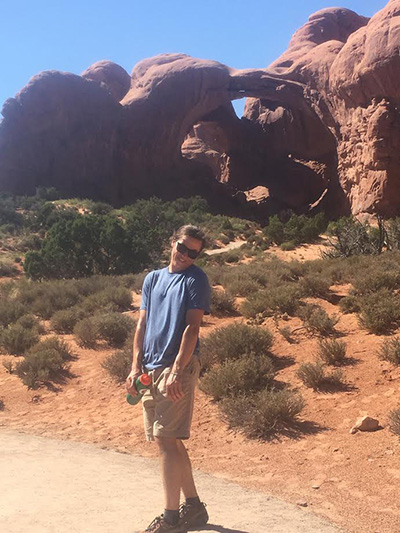 CRC’s Environmental Management Career Development Program works with the Chesapeake Bay Program partnership to offer three-year staff opportunities for science, management, and policy graduates as the partnership works to protect and restore the Chesapeake Bay. There are currently thirteen CRC Environmental Management Staffers supporting Chesapeake Bay Program initiatives for various lengths of time as each position follows its own timeline. The blended rotation of Staffers through the program affords new Staffers the opportunity to learn from the experiences of senior Staffers as they begin to navigate their way through the complexities of Chesapeake Bay restoration. CRC’s Environmental Management Career Development Program works with the Chesapeake Bay Program partnership to offer three-year staff opportunities for science, management, and policy graduates as the partnership works to protect and restore the Chesapeake Bay. There are currently thirteen CRC Environmental Management Staffers supporting Chesapeake Bay Program initiatives for various lengths of time as each position follows its own timeline. The blended rotation of Staffers through the program affords new Staffers the opportunity to learn from the experiences of senior Staffers as they begin to navigate their way through the complexities of Chesapeake Bay restoration.
Kyle Hinson is one of CRC’s senior Staffers in the career development program. For the past two and a half years, he has been supporting the work of the Chesapeake Bay Program’s Scientific and Technical Assessment and Reporting (STAR) Team. In this capacity Kyle has worked to support and engage with the Modeling Workgroup, the Integrated and Trends Analysis Team, and the Climate Resiliency Workgroup. Particular examples of this work include contributing to an assessment of statistical procedures in determining water quality trends, developing input datasets for the Phase 6 Watershed Model, and implementing an approach that incorporates the impacts of climate change into modeling processes. Let’s learn more about Kyle and his experience thus far.
CRC: Welcome, Kyle! Thanks for chatting with us. Your time in the program has really flown by and it is hard to believe you are now one of our senior Staffers preparing to leave the program.
Kyle: It’s strange to realize that I’ve been with the CRC at the Bay Program for two and a half years at this point, and I remember starting my first couple of weeks thinking that I was in way over my head. I would not have expected back then to be considered competent for a lot of the work that I’ve taken on, but it’s been such a great experience to try, then fail, then refine an approach, then fail but get good feedback, before landing on a solid strategy that I can explain to others. I’ve also had great times working with the other staffers, and getting to see a whole new group really grow and excel in their own positions.
CRC: In addition to supporting the mission of the STAR Team, you have been doing some really interesting work related to incorporating climate change considerations in the Chesapeake Bay Program’s models. Tell us more about this effort.
Kyle: So far the work that I have done to help represent scenarios of climate change in the Bay Program’s modeling framework has really been focused on the response of the watershed. I’ve spent a great deal of time trying to best determine how to approach the multitude of possible options when simulating climate change based on global climate models (GCMs), and have spent time trying to determine expected changes in precipitation and temperature. The timing of increased rainfall and stronger storms can greatly impact what flows down to the Bay, and tying together that response with increasing temperatures has been really insightful.
CRC: This research lead to an impressive professional development opportunity, didn’t it?
Kyle: Because of this work that I had a part in and the collaboration with the modeling team at the Bay Program and insight from outside partners, I was able to present a preliminary synthesis of our findings at the Association for the Sciences of Limnology and Oceanography (ASLO) in Honolulu in March. I received helpful feedback from the overview that I shared and was very pleased to see that other scientists who were conducting similar studies (like Dr. Swaney from Cornell) were finding similar results that can help to validate and improve methods among all parties. Apart from trying amazing food and exploring the city with folks I met, I really enjoyed immersing myself in presentations on topics that were completely foreign to me and happening upon new connections to the Bay Program work that I would have never considered otherwise.
CRC: Now that your time in the Environmental Management Career Development Program is coming to a close, what’s next for you?
Kyle: When I left UNC Chapel Hill I swore off going to graduate school and moved up to Maryland to get a fresh career start. Somewhere along the way here I changed my mind, and have since been accepted to the Virginia Institute of Marine Science to work with Dr. Marjy Friedrichs. I’m hoping to continue studying the impacts of climate change on the estuarine side of the Chesapeake Bay ecosystem using models, and gain a better understanding on how a warming earth could impact coastal systems that billions of people live near and rely upon. And if that doesn’t pan out, I may try and reunite my high school band or convince my brother to hire me as an agent for his fledgling biking career.
For additional information regarding CRC’s Environmental Management Career Development Program, please contact Melissa Fagan, Environmental Management Career Development Program Coordinator at faganm@chesapeake.org. Funding for CRC’s Environmental Management Career Development Program is provided through a cooperative agreement with the US EPA.
|
|
STAC: Scientific and Technical Advisory Committee
|
|
|
 The Chesapeake Bay Program’s Scientific and Technical Advisory Committee (STAC) is administered by CRC and funded through a cooperative agreement with the Chesapeake Bay Program (CBP) Partnership – currently spanning the period 2016-2022. The CRC has had a long-standing role of administering all activities of the CBP’s STAC, an active committee with 38 members from academic and scientific institutions around the watershed. The Chesapeake Bay Program’s Scientific and Technical Advisory Committee (STAC) is administered by CRC and funded through a cooperative agreement with the Chesapeake Bay Program (CBP) Partnership – currently spanning the period 2016-2022. The CRC has had a long-standing role of administering all activities of the CBP’s STAC, an active committee with 38 members from academic and scientific institutions around the watershed.
STAC held its fourth quarterly meeting of FY2016 on March 14, 2017. The meeting was held via webinar due to winter weather conditions. Topics addressed at this meeting included a briefing on the CBP’s approach to Conowingo infill, updates from the CBP on the 2017 Midpoint Assessment, and BMP (best management practice) performance uncertainty. STAC members also reviewed results of the FY2017 Request for Workshop Proposals (RFP), and discussed potential ideas for STAC’s annual report to the Executive Council (EC) of the CBP. STAC will host the first quarterly meeting of FY2017 on June 13-14, 2017 in Annapolis, MD. Please direct any STAC quarterly meeting questions or inquiries to STAC Staff, Elaine Hinrichs, hinrichse@chesapeake.org.
Progress continues on a number of FY2015 STAC workshop reports. Additionally, several FY2016 workshops were held in the last quarter. Reference Table 1 below for more progress and details regarding these workshops.
STAC has four review activities currently in progress: 1) Chesapeake Bay Water Quality Criteria Addendum, 2) Phase 6 Chesapeake Bay Watershed Model, 3) Chesapeake Bay Water Quality/Sediment Transport Model (WQSTM), and 4) Boat Wake Wave Impacts on Shoreline Erosion. All recent STAC review reports can be found online here.
For more information regarding STAC, please contact STAC Coordinator Rachel Dixon, dixonr@chesapeake.org.
The chronology of workshops and reviews undertaken since 2015 to present (and those currently in progress) are shown in Tables 1 and 2 below.
Table 1. STAC Workshops 2015 – present. Information regarding each workshop - including agendas, presentations, and reports (as available) - can be found on the STAC workshop website.
Table 2. STAC Reviews 2015 – present. For more information regarding the reviews, visit the STAC review webpage.
|
|
CCMP: Chesapeake Community Modeling Program
|
|
|

The CCMP continues planning for their next modeling symposium, “Advancing Observational and Modeling Research to Support Chesapeake Bay Management and Restoration.” This event will take place in the late spring our early time period of 2018. The CCMP SC is meeting once a month as part of this planning effort.
Next time you're on Facebook, be sure to "like" CCMP!
|
|
Funding the Ocean’s Online Registry
|
|
|
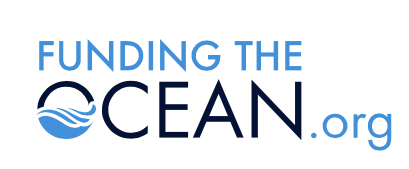 There is a new resource to unite stakeholders interested in helping the ocean. The platform, called Funding the Ocean, aims to open up access to data about ocean science in order to inspire philanthropic efforts. Their site includes a global map of conservation efforts, a searchable library of resources, and an online community of scientists and other stakeholders. The president of Foundation Center, a platform for finding service opportunities and the creator of Funding the Ocean, told Ocean News and Technology that the platform was formed to “help donors and doers make the best decisions possible.” You can contribute your research to their database or sign up for their newsletter here. There is a new resource to unite stakeholders interested in helping the ocean. The platform, called Funding the Ocean, aims to open up access to data about ocean science in order to inspire philanthropic efforts. Their site includes a global map of conservation efforts, a searchable library of resources, and an online community of scientists and other stakeholders. The president of Foundation Center, a platform for finding service opportunities and the creator of Funding the Ocean, told Ocean News and Technology that the platform was formed to “help donors and doers make the best decisions possible.” You can contribute your research to their database or sign up for their newsletter here.
|
|
Coastal and Estuarine Research Federation Conference
|
|
|
The Coastal and Estuarine Research Federation is hosting its 24th biennial conference, CERF 2017, and they are looking for participants. This conference provides four days of information on a vast array of topics related to estuarine and coastal projects. It will include speakers and workshops, and includes guests from all over the world. CERF 2017 is taking place November 5-9 in Providence, RI. The conference registration opened up in February, but the Early Bird registration ends May 15th.
|
|
|
The Mid-Atlantic Coastal Acidification Network (MACAN) is hosting workshop in Annapolis, MD on May 9 focused on estuarine, coastal, and ocean acidification. The objectives of the workshop:
- To determine key stakeholder concerns and needs regarding impacts to estuarine, coastal, and ocean species and ecosystems in the Mid-Atlantic.
- To initiate development of a comprehensive monitoring plan (e.g. location of sampling sites, timing/intervals, types of sampling, etc.), building off knowledge of monitoring that currently exists, to further understand estuarine, coastal, and ocean acidification and its impacts in the region.
- To develop an initial list of regionally relevant species that may be vulnerable to acidification.
- To begin to identify key research gaps to be pursued by MACAN and its partners.
- To identify additional information to be provided on the MACAN website.
Registration closes May 2. You can register here.
|
|
|
The 2017 MARACOOS Annual Meeting will feature a new format that includes an all-day meeting with partners, collaborators, and stakeholders on May 10th preceded by an evening networking reception on May 9th. Join individuals from the private sector, non-profits, academia, and government as we come together to discuss the state of ocean observing and set goals for the future of the Mid-Atlantic region.
You can register for the meeting here.
|
|
|
|